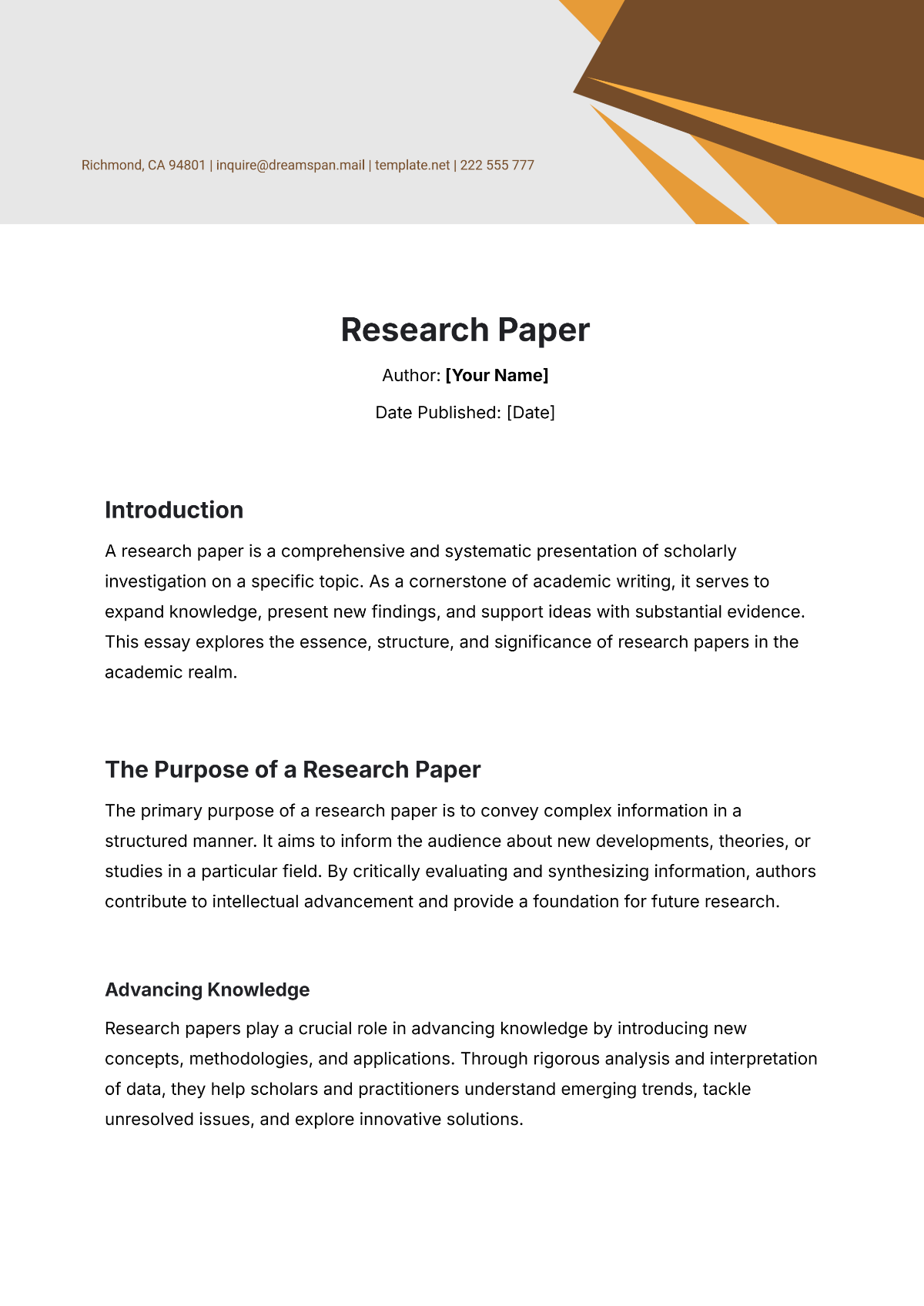Learning Gaps Action Research
Prepared By: [Your Name]
I. Introduction
Learning gaps, caused by factors like socioeconomic status, language barriers, different learning styles, poor teaching practices, and lack of resources, reflect the disparity between curriculum standards and students' actual grasp and memory of the material, resulting in significant academic and developmental imbalances that must be addressed to ensure equal educational opportunities for every student.
II. Purpose of the Research
The main goal of this action research is to discover, examine, and tackle the causes of learning gaps in schools by understanding the perspectives of students, teachers, and parents, ultimately aiming to create and apply strategies that boost student performance, engagement, and development, while also providing a versatile model for similar educational contexts.
III. Research Questions
What are the main factors contributing to learning gaps in the target group?
This question aims to uncover the underlying causes of learning gaps, such as instructional practices, curriculum design, socioeconomic factors, or individual student characteristics.
How do these gaps affect students' academic performance and overall development?
This question seeks to understand the impact of learning gaps on students' academic achievements, social skills, self-esteem, and long-term educational aspirations.
What interventions can be implemented to reduce or eliminate these gaps?
This question focuses on identifying effective strategies and practices that can be introduced to address the identified learning gaps.
How effective are the implemented interventions in improving learning outcomes?
This question aims to evaluate the success of the interventions through measurable improvements in student performance and engagement.
IV. Methodology
A. Participants
Students: The study will focus on a group of students identified as having significant learning gaps. These students may come from various grade levels and backgrounds, with particular attention paid to those from underserved communities or with learning disabilities.
Teachers: Educators who regularly interact with the identified students will participate. Their insights into classroom dynamics, instructional challenges, and student behavior will be crucial to understanding the factors contributing to learning gaps.
Parents/Guardians: The study will also involve parents or guardians to gather information on out-of-school factors, such as home environment, parental involvement, and access to learning resources, that may contribute to learning gaps.
B. Data Collection Methods
Pre-assessment Tests: These will be administered to identify the existing learning gaps among students. These tests will cover key academic areas such as literacy, numeracy, and critical thinking skills.
Surveys and Questionnaires: Tailored surveys will be distributed to teachers, students, and parents to gather qualitative data on perceived causes of learning gaps, instructional effectiveness, and the home learning environment.
Classroom Observations: Regular classroom observations will be conducted to understand instructional practices, student engagement levels, and classroom dynamics. Observers will focus on teaching methods, student interactions, and the use of learning materials.
Interviews/Focus Groups: In-depth interviews and focus groups will be conducted with selected participants, including students, teachers, and parents, to gain deeper insights into their experiences and perceptions of the learning gaps.
C. Data Analysis
Quantitative Analysis: Statistical analysis of pre-assessment test scores, survey responses, and other numerical data will be performed to identify patterns and correlations. This will help quantify the extent of learning gaps and the impact of various factors.
Qualitative Analysis: Thematic analysis of interviews, focus groups, and open-ended survey responses will be conducted to uncover the underlying themes, beliefs, and attitudes contributing to learning gaps. This analysis will provide a deeper understanding of the contextual and subjective aspects of the problem.
V. Interventions
Based on the findings from the data analysis, the following interventions will be designed and implemented:
Differentiated Instruction: This involves tailoring teaching methods and materials to meet the diverse needs of students. For example, teachers might use a variety of instructional approaches, such as visual aids, hands-on activities, and technology, to cater to different learning styles.
Peer Tutoring: A structured peer tutoring program will be introduced, where students who have mastered certain concepts will help their peers who are struggling. This approach not only aids in reinforcing learning for the tutor but also provides additional support for those who need it.
Professional Development for Teachers: Ongoing training sessions will be provided for teachers, focusing on strategies to identify and address learning gaps, differentiated instruction, and inclusive teaching practices. Workshops will also cover the use of data to inform instruction and how to engage students who are at risk of falling behind.
Parental Involvement Programs: Workshops and resources will be provided to help parents support their children's learning at home. These programs will emphasize the importance of a conducive learning environment, effective communication with teachers, and strategies for helping with homework and studying.
VI. Implementation
A. Pilot Phase
The interventions will first be implemented with a small group of students to test their effectiveness. During this phase, close monitoring will be conducted to assess how well the interventions address the learning gaps and to make any necessary adjustments.
B. Full-scale Implementation
Following the pilot phase, successful interventions will be rolled out across the entire target group. This will involve coordinating with all stakeholders, including teachers, students, and parents, to ensure a smooth and effective implementation process.
C. Monitoring and Feedback
A system for continuous monitoring of the interventions will be established. This will include regular check-ins with students, teachers, and parents to gather feedback and assess the progress of the interventions. Adjustments will be made as necessary to optimize their effectiveness.
VII. Evaluation
A. Post-assessment Tests
After the interventions have been in place for a set period, post-assessment tests will be conducted to measure improvements in students' learning outcomes. These tests will be compared with the initial pre-assessment results to gauge progress.
B. Comparison of Data
The evaluation will involve a detailed comparison of pre- and post-assessment data, as well as an analysis of feedback from surveys, interviews, and classroom observations. This comparison will help determine the effectiveness of the interventions in closing the learning gaps.
C. Refinement of Interventions
Based on the evaluation results, the interventions will be refined to further improve their impact. This may involve modifying instructional strategies, enhancing teacher training, or adjusting parental involvement programs to better meet the needs of students.
VIII. Conclusion
The action research process involves repeated cycles of assessment and improvement to adapt to new learning gaps and changes in the educational environment, thereby continuously enhancing educational practices. This systematic method allows educators to ensure all students have equitable opportunities for academic success and skill development, ultimately supporting a more inclusive education system.
IX. Reflection
Reflection is vital in this research, with students, teachers, parents, and researchers all prompted to consider their experiences, focusing on challenges, successes, and lessons learned, thereby promoting continuous learning, adaptation, and sustained improvements in education.

















































